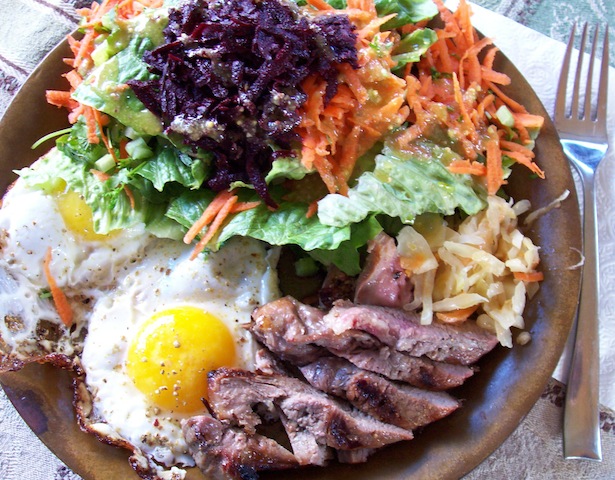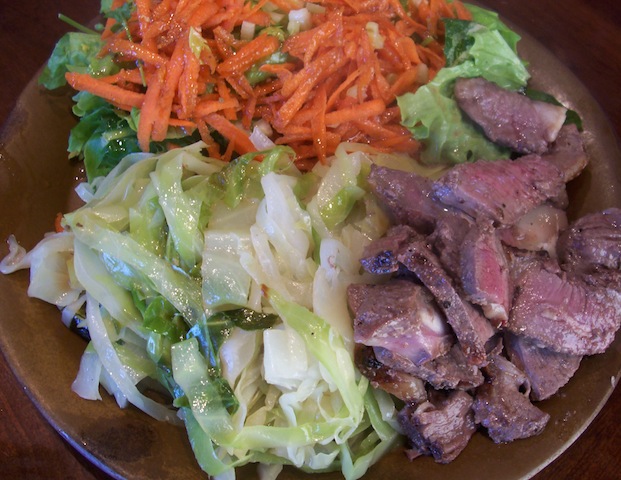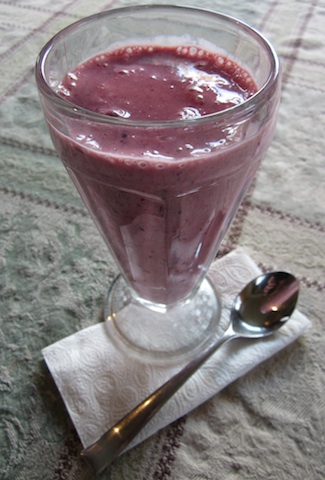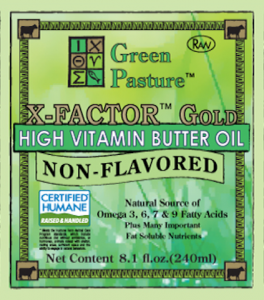
Eating well does not have to cost a fortune. Find quality sources of food and consider growing some food yourself. Cooking your own meals will save money and your health.
- Purchase your food as whole ingredients and as close to the original natural state as possible. Avoid processed foods. Avoid all additives, coloring, stabilizers and fillers. Avoid Genetically Modified Organisms (GMO). Here is a link to the Non-GMO Shopping Guide. If you are wondering what is wrong with GMOs please see the numerous video presentations by Jeffery Smith on GMOs. Make it a point to understand the system used to process your food. If you cannot understand the process, do not eat the food.
- Try to source your food locally. Get to know your farmers and ranchers. Show appreciation for all the work that goes into producing your food. Look for pastured raised or organic. If you are wondering what is so great about pastured raised animals please listen to Jill Eisen, on CBC Ideas program, Have Your Meat and Eat It Too! Find the local suppliers for un-sprayed products. There are many local suppliers which are not certified organic but follow organic principles. Un-sprayed products are usually cheaper than certified organic. Use eatkamloops.org to find local farmers and ranchers. For some guidelines about assessing food quality read WAPF Shopping Guide for Canada.
- Eat local foods seasonally. The food has better nutrition and is cheaper. If you would like to eat these foods out of season, find a suitable storage method. Get a large deep freezer and find an area in your home for dried stores. Consider building a root cellar or cold room. For more information read Winter Storage Part I and Winter Storage Part II.
- When buying from non-local sources try to buy certified organic. When we can’t talk to the producers about their practices, having a third party certification is a good idea. If certified organic foods are not in the budget, read about The Dirty Dozen and avoid foods with the most contamination.
- Consider growing your own food. Use container gardening on small properties or a big garden on larger lots. If labor is an issue, you might be able to trade garden space for labor. Depending on your zoning, you might be able to have laying hens for eggs or a miniature goat for raw milk.
- Start a grease bucket. Save all your drippings and fat from roasted meat and fowl. Use the grease for any high heat frying or roasting. For more information read The Grease Bucket – Something from Nothing.
- If you eat industrial vegetable oils or foods containing industrial vegetable oil, stop now. For cooking, replace these industrial vegetable oils with your grease bucket, butter, or coconut oil. Save your extra virgin olive oil for salads and uncooked foods. Other cold-pressed oils may be used occasionally in very small amounts. If you have any condition involving inflammation, removing even quality cold-pressed oils may improve your condition.
- Make bone broth. Save all your bones from meals and store in the freezer until you have a pot full. Cover the bones with water and add 4T cider vinegar and simmer for 6-24 hours. For more information read Beautiful Bone Broth.
- Eat some fermented foods each day or with each meal. Fermented foods improve our digestion. Fermentation can remove anti-nutrients from our food and increase nutrient availability. Fermented foods are not commonly available in the Industrial Food System and must be made at home. For more information read Wild Fermentation.
- Start making some fermented foods at home. A good place to start is making yoghurt or kefir. If you do not consume dairy, try making lacto-fermented vegetables or use sourdough for breads and biscuits. Contact eatkamloops.org for free starter cultures. For more information about what starters we have read I Got Culture!
- If you eat grains, beans, and legumes, soak them overnight in water, salt and fresh lemon juice before cooking. This soaking will remove the anti-nutrients from the food and make it easier to digest. Use bone broth when appropriate for the recipe in place of water. This will improve your digestion of these foods. If you are wondering why you need to soak grains read Be Kind to Your Grains. Here are FAQ about traditional food processing of grains, nuts, seeds and beans.
- Purchase all of your grains whole. If you are making flour, grind it yourself, and use it within four days. Flour is very perishable and will go rancid very quickly. Freshly ground flour can be stored in the freezer for later use.
- If you eat nuts and seeds, soak them overnight in water and salt. Nuts and seeds can be then dried and consumed uncooked. These store well in the freezer for quick use.
- Look for a local supply of grains, beans, legumes, nuts and seeds. There are many local varieties which will be fresher. Look for un-sprayed or organically grown.
- If you eat rice, buy organic brown rice. Since this is not a local product, buy certified organic. Brown rice does not need to be soaked overnight but cooking in bone broth will help with digestion and improve flavor. If you would like to try fermenting rice to improve mineral availability read A New Way to Soak Brown Rice.
- Buy your meat by the whole animal. This allows you to have a variety of cuts, offal, fat and bones. The butcher will package the meats in sizes that are best for your family. Get all the products from the animal even parts you do not know how to cook. They can always be used to make bone broth. For more information read Cooking with Grass-Fed Meat and Fowl and Visit to the Killing Floor at Kam Lake View Meat.
- If you consume dairy, find a source of raw milk or raw milk products. This will involve having your own cow, goat or sheep or being a member of a herd share program. If you are wondering what is so great about pastured raw milk please read Let’s Talk about Raw Milk Safety. For more information about herd share programs in the province read Birdsong Farm – Cow Share Program.
- If you are concerned that you have a deficiency in your diet and want to take a supplement, consider using whole foods, sometimes called superfoods. Examples of superfoods are: fermented cod liver oil, high vitamin butter, liver, spring and fall butter, raw milk products, bone broth and fermented foods. Other superfoods are related to the health problem of the person such as: various fresh or dried glands, kelp, assorted clays, probiotics, assorted high vitamin berries and herbs. For more information about superfoods read Supplement or Superfoods.
- Look at your cosmetics and decide if you would eat them. If you would not like to eat them, consider stopping use. Our skin is far more porous than was once believed. The use of coconut oil can be a excellent moisturizer. Consider making your own soap or buying brands with very few ingredients. A good source of information about the safety of your cosmetics can be found on Skin Deep: Cosmetic Safety Database. If you would like recipes for making cosmetics, cleaners and simple medicines please read Healthy Household: Staying Clean Safely and Saving Money.
- Look through your medicine chest and decide if you can do without most of your medication. Many medications mask symptoms while the condition worsens. It is better to feel the pain and make fundamental changes in our lives, rather than masking symptoms while the condition gets worse. Think about the other drugs you take on a daily basis. Assess if these drugs might be adding to your health problems.
- Think about food preparation in the home and how the task can be done efficiently. The job of running a traditional household is more work than eating convenience foods. This means someone must be willing to allot time for this important work. Some people use one day a week where they spend a morning in the kitchen producing meals for the whole week. Others cook larger meals and consume the leftovers.
- Remove all plastics from your kitchen and replace with glass containers. Remove Teflon and aluminum from your kitchen and use stainless steel, glass, cast iron or enameled cast iron. Stop using a microwave for cooking or reheating foods.
- If you are thinking about having a child, start thinking about what you eat before you conceive. All traditional populations had a special feeding schedule for mothers and fathers to be. For more information read Thinking about Motherhood.
- If you continue to have health problems after changing over to a nourishing traditional diet, consider looking at the Specific Carbohydrate Diet. This diet is also known as Gut and Psychology Syndrome (GAPS). This diet is for very sick people. For more information about SCD and GAPS please read Specific Carbohydrate Diet. Please read this very good article by Dr Ron Schmid called Diet and Recovery from Chronic Disease.
- Continue getting educated about health. eatkamloops.org has donated a number of books to the Kamloops Public Library. For a list of donated books read Recommended Reading List. Look through the WAPF Shopping Guide for tips on assessing the quality of your food choices.







